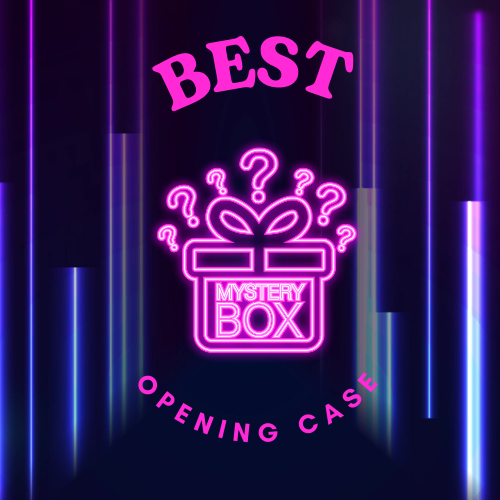
Mystery boxes are built around one core mechanic: surprise. Yet, what’s truly fascinating isn’t just the value of what’s inside the box, but how it makes us feel in the moments leading up to that reveal. In fact, countless users report that the emotional rush they get from unboxing is often stronger and more memorable than the actual outcome itself. Why does this happen? Why does simply opening a box, not knowing what’s inside, spark more excitement than winning a known, valuable item?
The emotional buildup of the unknown
When someone purchases a mystery box, the clock starts ticking on an emotional journey. There’s the thrill of ordering it, imagining what might be inside, and the mental game of playing out the possibilities. This moment is filled with potential, and potential is powerful. The value hasn’t yet been defined, and so it can be anything your mind conjures. A rare collectible? A high-end gadget? The limited-edition item you always wanted?
This mental anticipation creates a cocktail of psychological effects. Dopamine—the neurotransmitter associated with reward—isn’t just released when we receive a prize, it starts flowing when we anticipate one. The longer this buildup lasts, the more amplified the final reveal feels. In this sense, the suspense becomes its own form of reward.
Suspense and storytelling: why the process matters
Just as in a great movie or novel, the lead-up—the buildup of tension, the slow unraveling of a mystery—is what makes the climax satisfying. When mystery box platforms add effects like slow openings, flickering lights, dramatic music, or spinning wheels, they are building a mini narrative. You become the protagonist of a very short, very intense story where you’re chasing a treasure.
The story format engages the imagination. Even before the box is opened, users are unconsciously creating a plot: « What if this is the one? What if I get that item? » The unboxing moment becomes the climax of that story. And in many cases, this climax is more emotionally charged than the resolution. This is why even when the contents are average, the process still feels worth it.
Expectation vs. reality: the brain’s love for maybes
There’s a fascinating neurological principle at play here. Human brains are highly stimulated by uncertainty. In some experiments, subjects actually showed more neural activity when they had a 50% chance of winning something than when they had a 100% chance.
Mystery boxes thrive in this zone of uncertainty. The maybe is what fuels the entire experience. The human brain treats the unknown as something to be explored, conquered, and, in a way, enjoyed. When there’s no clear outcome, everything becomes possible, and that activates areas of the brain tied to motivation, curiosity, and reward.
The key is that the feeling of a possible win is often stronger than the satisfaction of a confirmed win. That feeling is hard to replicate in traditional shopping where you know what you’re buying.
The performance of unboxing: social amplification of emotion
In the age of social media, unboxing has become more than a private experience. It’s now a performance. People film themselves opening mystery boxes, live-streaming the process or uploading it to platforms like YouTube or TikTok.
This added layer of visibility heightens the stakes. When others are watching, every flinch, gasp, or smile becomes amplified. It’s no longer just about what’s inside—it’s about how it makes you look and feel in the moment. The social reward system kicks in, reinforcing those feelings of excitement, validation, and even envy.
The performance creates a feedback loop. If you get a rare item, you get likes, comments, views. If the item isn’t great but your reaction is entertaining, you still win in terms of social currency. Either way, the act of unboxing becomes the prize.
Tactile satisfaction and sensory engagement
Even the physical sensation of opening a package plays a role in the emotional high. Pulling back a lid, tearing into wrapping, hearing the crinkle of paper—these actions trigger sensory cues linked to pleasure. They echo the primal joy of discovering something hidden, of finding a reward after effort.
Retail designers have long known that tactile feedback can influence customer satisfaction. Mystery box companies have started to mirror this logic by making packaging itself a part of the experience. High-end boxes use velvet inserts, magnetic flaps, layered reveals, or hidden compartments. The process of discovery is stretched out to maximize emotional impact.
Small wins, strong emotions: even average items can trigger joy
It’s easy to assume that big reactions only come from big wins, but in reality, even small victories can feel huge in the context of a mystery box. That’s because the emotional intensity comes less from the objective value and more from the surprise. Pulling out an item you didn’t expect—even if it’s not expensive—feels like a success.
This is also why people keep coming back. The emotional reward doesn’t require a jackpot. It only requires something unexpected that still feels positive. It’s a form of low-stakes gambling where the user walks away with something tangible regardless of the result.
The contrast effect: how unpredictability heightens reactions
In psychology, the contrast effect explains how the context of an experience influences how we perceive it. If you get two low-tier items in a row, and then suddenly get a mid-tier or high-tier item, your reaction is stronger than if you had received that same item with no prior context.
Mystery boxes exploit this perfectly. A run of less exciting pulls makes the next good item feel even more rewarding. It’s like climbing a small mountain before you reach the view. The prior « failures » enhance the emotional payoff of the « win. »
Delayed gratification and emotional tension
One powerful dynamic in mystery boxes is the delay. Whether it’s the few seconds of a spinning wheel, the slow lifting of a box lid, or waiting days for a physical package to arrive—this delay stretches out the experience.
Delayed gratification increases emotional investment. The longer you wait, the more you care. The anticipation builds tension, and when tension is finally released, the emotional response is stronger. This is why mystery boxes that use suspense-building elements—visuals, sound, timed reveals—generate more powerful emotional highs than those that reveal contents instantly.
Post-unboxing euphoria and its emotional echo
Even after the item is revealed, the high doesn’t end. There’s a brief window of post-unboxing euphoria where users want to share their experience, talk about it, replay it, or seek validation. This echo effect keeps the emotional engagement going.
People may immediately post on forums, send pictures to friends, or hop into another box out of momentum. It’s not just about what you got; it’s about how that moment made you feel—and how long you can stretch that feeling.
The psychological safety of low-risk risk-taking
Unlike real gambling, where you can lose your money entirely, mystery boxes usually guarantee something. That makes the risk feel safer, more fun, and more socially acceptable. You’re not throwing money into a void; you’re getting a surprise. The emotional experience mimics that of a high-stakes bet, but without the existential downside.
This balance of risk and safety is critical. It allows users to feel adventurous and impulsive, while still justifying their behavior as shopping. It satisfies both the desire for control and the thrill of chance.
Unboxing as escapism
For many people, unboxing a mystery box is a temporary escape from routine. It’s a moment of novelty in a world that often feels predictable. That break from monotony creates space for emotional rejuvenation.
Whether you’re in the middle of a boring workday, dealing with stress, or simply looking for a boost, unboxing provides a few seconds or minutes of emotional excitement. It’s a micro-experience that breaks through the noise and offers a real, visceral feeling. That sense of escape, even if brief, is powerful—and it’s a big part of why people chase the unboxing experience over and over.
In the end, it’s not just about what’s in the box. It’s about everything that leads up to it, the feelings it stirs, the what-ifs, the social energy, the sensory details, and the small stories we create each time. Mystery boxes don’t just sell products—they sell emotions, anticipation, and the incomparable high of surprise. And for many users, that feeling is more addictive, more satisfying, and more memorable than the item they walk away with.
